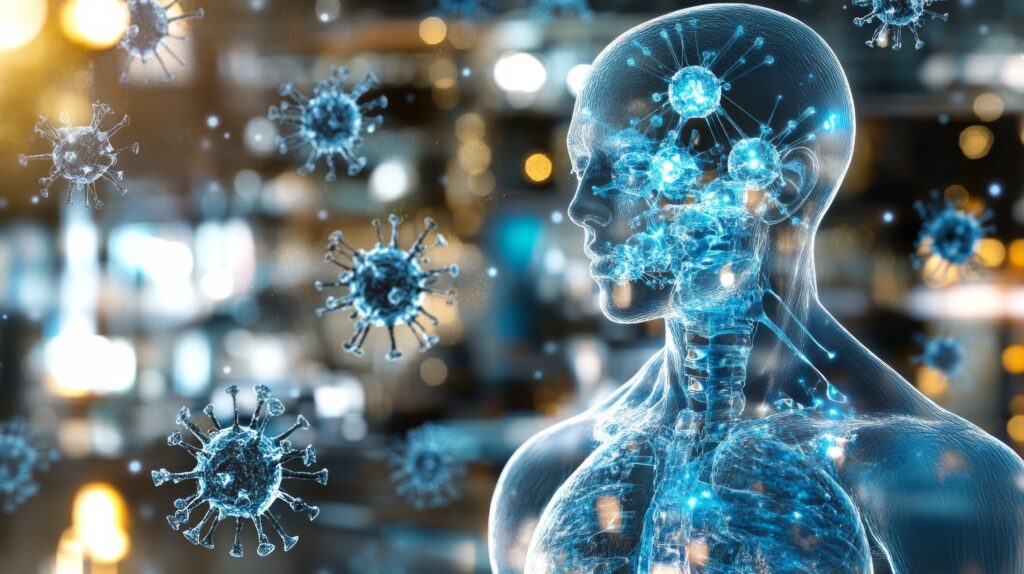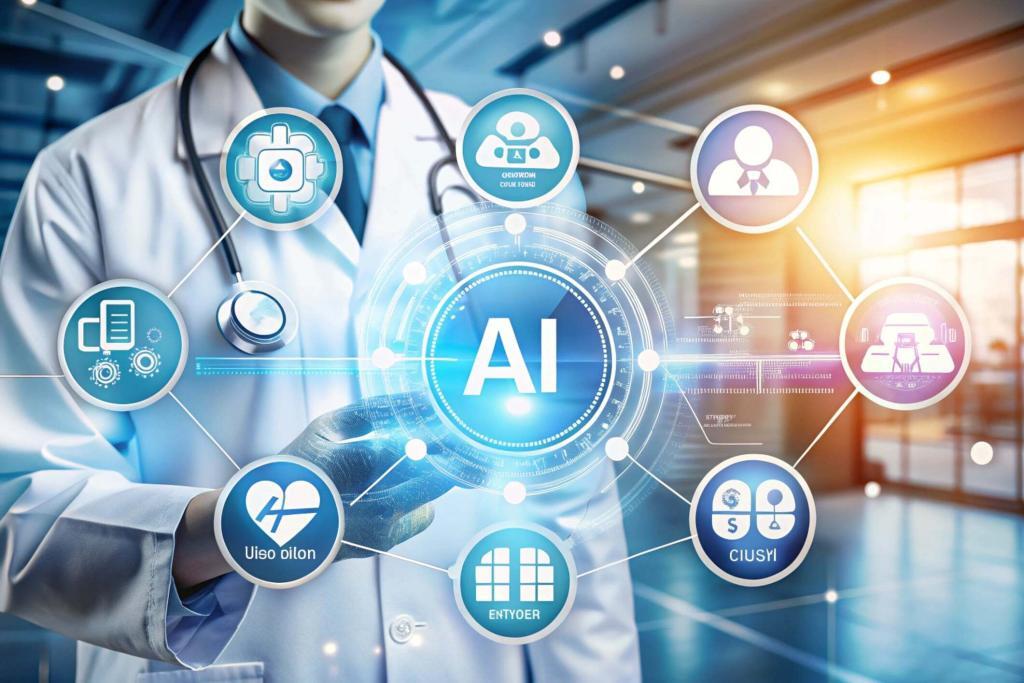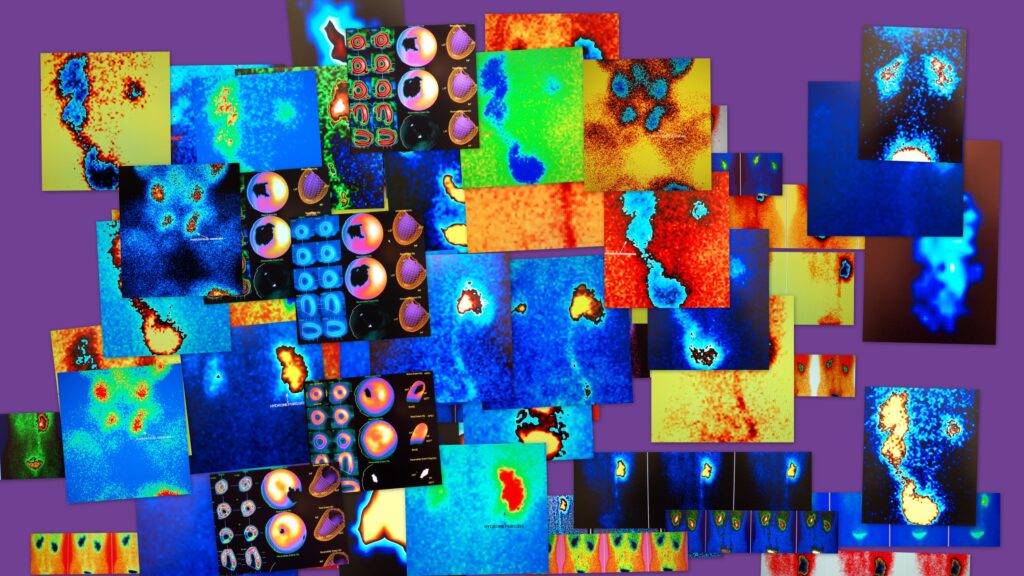Summary: Artificial Intelligence (AI) is reshaping medical imaging by significantly enhancing the capabilities of computed tomography (CT) scanners. This integration leads to faster, safer, and more accurate diagnostics, enabling improved patient outcomes. Through enhanced image processing, radiation dose optimisation, predictive diagnostics, streamlined workflows, real-time image reconstruction, and personalised patient care, AI-driven CT scanners are becoming increasingly essential in modern healthcare.
Keywords: Artificial Intelligence (AI); Computed Tomography (CT); Image Processing; Radiation Dose; Diagnostics; Personalised Healthcare.
Artificial Intelligence (AI) and CT Scanners: An Overview
Artificial Intelligence (AI) is at the forefront of technological evolution in healthcare, particularly within diagnostic imaging. Computed tomography (CT), a critical imaging modality, generates detailed cross-sectional images of the human body using X-rays. Conventional CT scanning has played a crucial role in diagnosing a wide range of conditions, including fractures, infections, cancers, and cardiovascular diseases. However, conventional CT technologies encounter limitations regarding radiation exposure, image quality, and diagnostic accuracy.
The advent of AI presents transformative solutions that effectively address these challenges. Integrating AI algorithms with CT scanners enables radiologists and healthcare providers to obtain superior-quality images, achieve quicker scan times, reduce radiation exposure, and experience significantly improved diagnostic accuracy. This technological synergy is swiftly becoming a standard practice in advanced medical centres worldwide.
Image Processing Enhancement through AI
A key contribution of AI to CT scanners is advanced image processing. Traditional CT image analysis requires considerable human interpretation, which can be time-consuming and prone to variability due to differing expertise levels. AI-powered image processing algorithms significantly enhance image quality, reduce noise, and sharpen anatomical details, thereby improving the overall clarity of images. Through techniques such as deep learning and neural networks, AI systems can detect subtle pathological features often overlooked by human observers.
Machine learning models, trained on vast datasets of medical images, are proficient in distinguishing normal anatomical structures from abnormal findings. This capacity allows rapid identification of conditions such as tumours, vascular malformations, and subtle organ damage. For example, AI-enhanced imaging in pulmonary CT scans can quickly identify tiny nodules indicative of early-stage lung cancer, increasing the likelihood of successful treatment.
Radiation Dose Optimisation with AI
Reducing patient exposure to radiation is a continuous priority in medical imaging. High radiation doses associated with traditional CT scans increase the risk of long-term complications, including radiation-induced malignancies. AI integration addresses this critical safety concern by optimising radiation doses required for producing diagnostically useful images.
AI algorithms achieve this by dynamically adjusting exposure settings based on patient-specific variables, such as size, weight, and anatomy, ensuring minimal yet sufficient radiation exposure. Predictive analytics within AI systems help clinicians choose optimal scanning protocols tailored to individual needs, significantly reducing unnecessary exposure without compromising image quality or diagnostic accuracy. Consequently, AI-enabled CT scanners uphold stringent safety standards while ensuring essential diagnostic performance.
Advancements in Predictive Diagnostics
The predictive diagnostic capabilities of AI represent another significant advancement in CT imaging. Predictive analytics integrated into AI systems can forecast disease progression, treatment responses, and clinical outcomes based on image-derived data and a patient’s medical history. By analysing extensive imaging databases, AI models identify patterns that correlate with future medical events, enabling proactive rather than reactive medical care.
For instance, AI systems can predict the likelihood of pulmonary embolism or stroke from CT angiography scans before symptomatic manifestations occur. Similarly, cardiovascular CT integrated with AI can predict potential cardiac events, enabling clinicians to intervene earlier with preventive strategies. Predictive diagnostics through AI thus facilitate a proactive approach, significantly enhancing patient prognosis and clinical decision-making.
Streamlined Clinical Workflow with AI
Another substantial benefit of integrating AI into CT scanners is improved workflow efficiency within medical facilities. Traditionally, image interpretation and reporting can be lengthy, placing immense pressure on radiology departments and potentially delaying patient care. AI automation dramatically streamlines these processes, increasing throughput and reducing wait times for diagnosis.
AI software can prioritise scans based on urgency, automatically flagging critical findings for immediate review. Tasks such as segmentation, lesion detection, and preliminary reporting, which were once labour-intensive, now occur rapidly and automatically through AI tools. This frees radiologists from repetitive tasks, allowing more time for complex diagnostics and patient care decisions. The ability of AI to optimise clinical workflows significantly improves the efficiency and effectiveness of healthcare delivery.
Real-time Image Reconstruction and Analysis
The integration of AI also facilitates real-time image reconstruction during the scanning process. Conventional CT image reconstruction methods often require extensive post-processing, which can delay the delivery of critical diagnostic information. In contrast, AI-powered image reconstruction algorithms provide almost instantaneous, high-quality imaging. Deep learning techniques, trained extensively on medical imaging databases, can rapidly reconstruct images without sacrificing clarity or detail.
Real-time reconstruction is particularly beneficial in emergency medicine and interventional procedures. Immediate high-resolution imaging enables clinicians to make quicker, informed decisions during urgent situations, significantly enhancing patient outcomes. For instance, real-time imaging is indispensable in managing acute trauma, strokes, or during surgical interventions, where every moment counts towards patient survival and recovery.
Personalised Healthcare and Patient-centred Imaging
AI integration in CT scanners is moving healthcare towards personalised medicine. Traditionally, diagnostic procedures like CT scanning followed generalised protocols that did not necessarily accommodate individual patient characteristics comprehensively. AI changes this approach by integrating patient-specific data—such as genetic markers, medical history, lifestyle factors, and previous imaging studies—into the imaging and diagnostic process.
Through AI-driven personalisation, scanning protocols and interpretations become highly tailored to individual patients, enhancing diagnostic precision. This individualised approach not only improves diagnostic accuracy but also personalises risk assessment, disease prevention strategies, and therapeutic interventions. The concept of patient-centred imaging places the patient at the core of medical decision-making, maximising outcomes through tailored clinical care.
Challenges and Future Directions
While the integration of AI into CT scanners presents numerous benefits, several challenges remain. AI-driven imaging requires substantial, high-quality datasets for training algorithms effectively. Issues of data privacy, standardisation, and ethical considerations pose significant hurdles. Furthermore, regulatory bodies need to continuously assess and validate AI algorithms for clinical efficacy and safety, complicating rapid technological adoption.
The future of AI in CT scanning is likely to include greater integration of multimodal imaging, combining CT data with MRI, ultrasound, and PET scans, thereby further refining diagnostic capabilities. Ongoing developments in explainable AI, transparent decision-making algorithms, and advanced computational hardware promise increased acceptance and effectiveness of AI systems. Continuous training, collaboration between technologists and healthcare providers, and effective regulation will be essential to realise the full potential of AI in medical imaging.
Conclusion
The integration of Artificial Intelligence into computed tomography scanners is revolutionising medical imaging. By significantly enhancing image processing, reducing radiation exposure, improving diagnostic precision, streamlining clinical workflows, enabling real-time image reconstruction, and personalising patient care, AI-driven CT scanners provide unprecedented benefits for healthcare providers and patients alike. Although challenges remain, the ongoing evolution and adoption of AI promise an era where diagnostics are quicker, safer, more accurate, and uniquely tailored to each patient, thereby substantially improving healthcare outcomes worldwide.
Disclaimer
The content provided in this article is for informational and educational purposes only and is not intended as a substitute for professional medical advice, diagnosis, or treatment. While every effort has been made to ensure the accuracy and reliability of the information presented, Open MedScience makes no representations or warranties, express or implied, regarding the completeness, suitability, or validity of any information provided.
Any mention of specific medical technologies, AI systems, or clinical practices is not an endorsement and should not be interpreted as medical guidance or a guarantee of performance. Readers are advised to consult qualified healthcare professionals before making any decisions related to medical imaging or treatment based on the content of this article.
Open MedScience disclaims any liability for loss, injury, or damage incurred as a result of reliance on the information contained herein.
You are here: home » diagnostic medical imaging blog »



